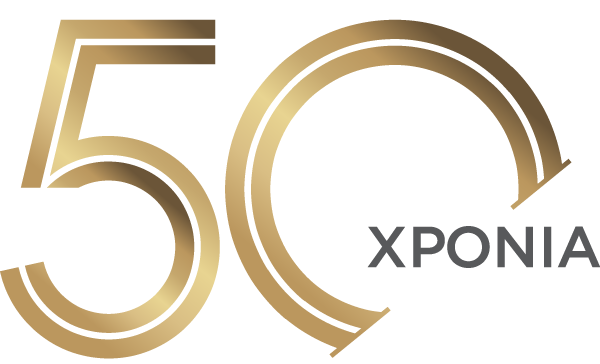- HYGEIA
- Vision & Mission
- Timeline
- Organizational structure
- Press Releases
- Social responsibility
- Awards and Distinctions
- Human Resources
- Scientific & Training activities
- Articles – Publications
- Our Facilities
- Magazines
- Healthcare Programs
- Doctors
- Services
- Medical Divisions & Services
- Imaging Divisions
- Departments
- Units
- Centers of Excellence
- Emergency – Outpatient
- Nursing Service
- Ambulances
- Patients
- Hygeia
- Υπηρεσίες
- Ιατρικά Τμήματα & Υπηρεσίες
Parkinson & Movement Disorders Department
In the Parkinson & Movement Disorders Dept. of Hygeia Hospital, individuals with the following disorders are assessed and monitored:
- Parkinson’s Disease
- Atypical parkinsonian syndromes (progressive supranuclear palsy, multiple system atrophy, corticobasal degeneration)
- Dystonia (primary and secondary, cervical dystonia, blepharospasm, Meige, wrtier’s cramp, etc.)
- Tremor
- Tics (Tourette’s syndrome)
- Chorea (Huntington’s disease, etc.)
- Myoclonus
- Ataxias
- Stiff-person syndromes
- Movement disorders associated with sleep (restless-legs syndrome)
- Paroxysmal movement disorders
- Other dyskinetic syndromes such as hemifacial spasm etc.
- Diagnosis based on clinical and paraclinical investigations
- Specific treatments for advanced PD (pump placement, evaluation for deep brain stimulation)
- Botulinum toxin Injections with or without electromyography for various disorders such as dystonias, tics, spasticity, hyperhidrosis, etc.
- Regular monitoring of patients to adjust therapy
- Coordinated approach by physiotherapists, speech therapists, psychiatrist, neuropsychologist and neurosurgeon, when necessary
- On a research basis, collaboration with the University of Marburg, Germany, University College London, UK, National and Kapodistrian University of Athens, and other centers abroad for conducting studies.
Parkinson’s disease (PD) is the most common neurodegenerative movement disorder. Ususally, PD begins between 40 and 70 years, with a mean age of onset the seventh decade. The cause of sporadic PD is probably multifactorial, and is associated with genetic predisposition, environmental toxins, and aging. In 5-10% of cases PD may be inherited. The primary dysfunction in PD is the degeneration of neurons contained in the brainstem, especially in the substantia nigra.
The clinical signs and symptoms of PD include rest tremor, rigidity, bradykinesia, and impairment of postural reflexes. The disease is chronic, slowly progressive. Dementia associated with Parkinson’s disease has been estimated to affect around 20% of patients, with a higher frequency among older patients, while it is less common among those with early age of onset. It is estimated that 40% -60% of patients with PD suffer from depression. Therefore, the disease is characterized not only by motor but also by non-motor symptoms.
Treatment of PD is currently mainly symptomatic. Before the introduction of levodopa, PD caused severe disability in patients. The introduction of levodopa has been considered one of the greatest achievements of modern medicine. Levodopa remains the most effective treatment available to alleviate the symptoms of PD since its first introduction, in the 1960s. However, its long term use is associated with chronic complications such as motor fluctuations (“on-off”), dyskinesias and visual hallucinations; therefore a careful planning of a long-term therapeutic plan is crucial for the quality of life over the years. Other dopaminergic agents apart from levodopa include dopamine agonists, inhibitors of COMT, the MAO-B and others. Treatment of advanced PD includes surgery (deep brain stimulation) and the use of apomorphine or Duodopa pumps ®. The careful selection of suitable patients for the aforementioned methods is crucial for the outcome. An individualized treatment is important for the effectiveness of available drugs on the long run. In the Movement Disorders Department of Hygeia Hospital these services are provided in conjunction with other disciplines.
(Progressive supranuclear palsy, multiple system atrophy, corticobasal degeneration)
Other causes of parkinsonism include multiple system atrophy (MSA), progressive supranuclear palsy (PSP) and corticobasal degeneration (CBD). These are grouped under the term “atypical parkinsonism” or “Parkinson-plus syndromes.” They do not respond as well as PD to treatment with dopaminergic drugs and generally have a different prognosis from Parkinson’s disease.
The differential diagnosis with Parkinson’s disease is of major prognostic and therapeutic importance.
Movement Disorders Dept. of Hygeia Hopsital offers specialized medical monitoring and diagnostic methods for the diagnosis and treatment of patients with atypical parkinsonian syndromes.Multiple system atrophy (MSA)
MSA is a rare neurodegenerative disease characterized by autonomic nervous system dysfunction (with orthostatic hypotension, and urogenital symptoms), parkinsonism and / or cerebellar signs (gait instability, impaired speech). The usual age of onset is 53-55 years. MSA is a sporadic disease. The response to parkinsonian dopaminergic drugs is poor, and the diagnosis and treatment requires specialization and frequent monitoring. The diagnosis requires expertise and clnical experience with the disease, as there is currently no diagnostic test to confirm the diagnosis. Specific MRI scans and SPECT-imaging, offered in our Department, may be supportive for the diagnosis.Progressive supranuclear palsy (PSP)
PSP is a rare neurodegenerative disorder characterized by symmetric parkinsonism, supranuclear palsy of vertical gaze and postural instability with frequent falls mainly backwards. Patients often develop in the course of the disease subcortical dementia, dysarthria and dysphagia. The mean age of onset is 63 years. PSP is almost always sporadic. Diagnosis is important for prognosis. The diagnosis requires expertise and clnical experience with the disease, as there is currently no diagnostic test to confirm the diagnosis. Specific MRI scans and SPECT-imaging, offered in our Department, may be supportive for the diagnosis.Corticobasal degeneration (CBD)
CBD is a rare neurodegenerative disorder that is usually characterized by asymmetric parkinsonism, dystonia, myoclonus, and further signs of cortex degeneration (eg, apraxia, alien limb). The exact prevalence of CBD is unknown, but is it believed to be significantly lower than that of PSP or MSA. CBD is almost always a sporadic disease. Diagnosis is important for prognosis. The diagnosis requires expertise and clnical experience with the disease, as there is currently no diagnostic test to confirm the diagnosis. Specific MRI scans and SPECT-imaging, offered in our Department, may be supportive for the diagnosisSecondary or symptomatic parkinsonism
Parkinsonism can also be secondary, often vascular, drug-induced or the result of other structural damage of the brain. Of these, parkinsonism caused by drugs is perhaps the most common, and contains use of drugs that block the post-synaptic dopamine D2 receptors with high affinity (as antipsychotic and antiemetic drugs) and sodium valproate. The differential diagnosis of Parkinson’s disease is aided by performing a dopamine transporter scintigraphy (DaTSCAN), and is important as treatment of secondary parkinsonism as well as prognosis differ significantly from that of Parkinson’s disease.(Primary and secondary, cervical dystonia, blepharospasm, Meige, wrtier’s cramp, etc.)
Dystonia is a movement disorder characterized by sustained or intermittent muscle contractions of certain muscle groups leading to abnormal, often repetitive movements or positions of various members of the body. Tremor can coexist or may be the predominant symptom. A common feature of dystonia is that it can be relieved temporarily by some movements (geste antagoniste), for example by touching the affected or adjacent body part withthe hand the patient can reduce dystonia. Cerebral dysfunction in dystonia includes several areas of the central nervous system (in particular, basal ganglia, cerebellum, supplementary motor areas and sensorimotor cortex).
Primary (or isolated) dystonia with onset in childhood tends to be generalized and is relatively rare, while dystonia occuring in adulthood usually remains focal or segmental. Some common dystonia syndromes in adulthood include blepharospasm (in which sustained contractions of the muscles around the eye lead to forced, sustained closure of the eyes), spasmodic dysphonia, oromandibular dystonia, and cervical dystonia or torticollis. Task-specific focal dystonias (e.g. released when carrying out specific actions) are common and include writer’s cramp, musicians’ dystonia and others. In some cases dystonia is hereditary and several genes have been reported to date, to cause familial dystonia. Dystonia may also be secondary, as a result of a variety of neurodegenerative, or neurometabolic diseases or due to structural brain damage. In these cases, the differential diagnosis is crucial for treatment.Treatment of dystonia depends on the underlying disease. In isolated dystonias botulinum toxin injections is the treatment of first choice and widely used worldwide for decades. It requires experience for choosing the right doses and muscles. Other pharmaceutical treatments are available, and in some cases surgery (deep brain stimulation), may be indicated. In our Movement Disorders Dept. of Hygeia Hospital these services are provided.
Tremor (shaking) is a movement disorder which can results from a variety of underlying diseases. Very often, tremor may occur in healthy individuals due to stress, taking large quantities of caffeine or nicotine, in thyroid diseases and is then called enhanced physiological tremor. The most frequent form of familial tremor usually occurs in adolescence and is called Essential Tremor, which is a benign condition. However, the tremor may be a symptom of another underlying disease (such as Parkinson’s disease), in which case there are usually additional symptoms. The diagnosis is of great importance for the prognosis and treatment, as severe tremor may significantly impair the quality of life of patients.
Tics are involuntary, brief, stereotyped movements. Besides motor tics that are the most common, there are also vocal tics. An important clinical feature is that tics can be suppressed by the patient for a short time. Usually the patient is experiencing a growing sense of anxiety and distress during trying to suppress tics, which is relieved, when tics are released. Tics are very common, 15% of the population will have a tic at some time of their lives. For the vast majority this is for a short period of time, appears in childhood and has little or no clinical significance. However, in some cases, it heralds the onset of a chronic disorder that can lead to significant physical, psychological and social dysfunction, therefore correct diagnosis is crucial.
TOURETTE’S SYNDROME (TS)
TS affects 0.5-1% of the population aged under 18, and 0.3-0.5% of the adult population. The key clinical feature of TS is the presence of multiple, motor and vocal tics with onset before the age of 18 years. Other clinical features include coprolalia and copropraxia, socially inappropriate behaviors, and psychiatric disorders (such as attention deficit / hyperactivity disorder, obsessive compulsive disorder and depression).
Treatment of TS focuses on the recognition of the symptoms that are causing the greatest distress for patients. Many individuals with this syndrome have mild sypmtoms and do not require medical treatment. Treatments targeting motor tics include injection of botulinum toxin, which can help significantly, with far fewer side effects than other available drugs to specific motor tics. There are further drug therapies and deep brain stimulation for selected cases. Quite important in some individuals is the treatment of psychiatric comorbidity and the individualization of treatment. In the Movement Disorders Dept. of Hygeia hopsital these services are provided.
 Contact Us
Contact Us3rd Floor
Office 9
(9, Eryrthrou Stavrou – Opposite Hygeia Hospital)Telephone
+30 210 686 7330Office Hours
Monday, Tuesday & Friday
09:00 – 15:00Medical Team
- Head of Department
-
 Stamelou Maria
Stamelou Maria - Αttending Physicians
- Attending Physicians
-
 Tsopelas Nikolaos
Tsopelas Nikolaos
- © 2007-2025 HYGEIA S.M.S.A.
- Personal Data Protection Policy
- COOKIES Policy
- Terms of Use
- Privacy Policy
- Credits
- Sitemap
- Made by minoanDesign
Ο ιστότοπoς μας χρησιμοποιεί cookies για να καταστήσει την περιήγηση όσο το δυνατόν πιο λειτουργική και για να συγκεντρώνει στατιστικά στοιχεία σχετικά με τη χρήση της. Αν θέλετε να λάβετε περισσότερες πληροφορίες πατήστε Περισσότερα ή για να αρνηθείτε να παράσχετε τη συγκατάθεσή σας για τα cookies, πατήστε Άρνηση. Συνεχίζοντας την περιήγηση σε αυτόν τον ιστότοπο, αποδέχεστε τα cookies μας.
Αποδοχή όλων Άρνηση όλων ΡυθμίσειςCookies ManagerΡυθμίσεις Cookies
Ο ιστότοπoς μας χρησιμοποιεί cookies για να καταστήσει την περιήγηση όσο το δυνατόν πιο λειτουργική και για να συγκεντρώνει στατιστικά στοιχεία σχετικά με τη χρήση της. Αν θέλετε να λάβετε περισσότερες πληροφορίες πατήστε Περισσότερα ή για να αρνηθείτε να παράσχετε τη συγκατάθεσή σας για τα cookies, πατήστε Άρνηση. Συνεχίζοντας την περιήγηση σε αυτόν τον ιστότοπο, αποδέχεστε τα cookies μας.












































